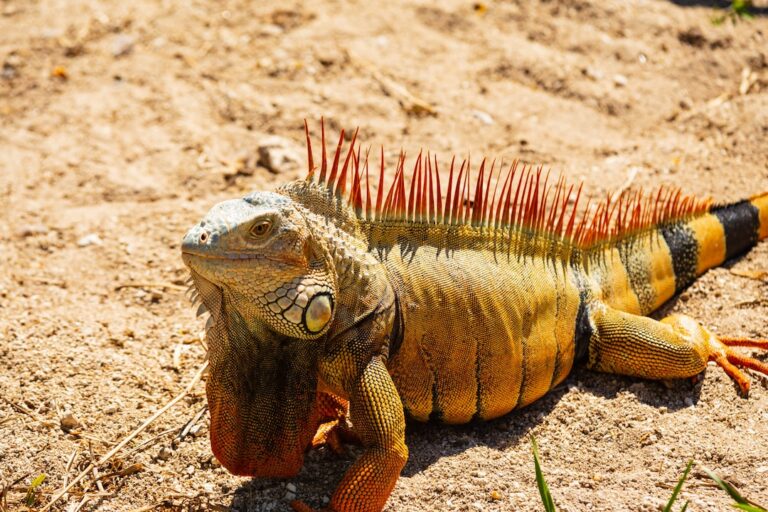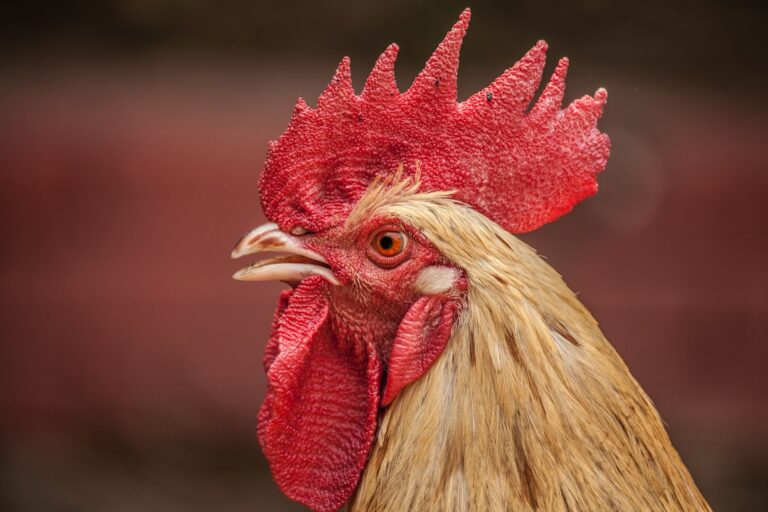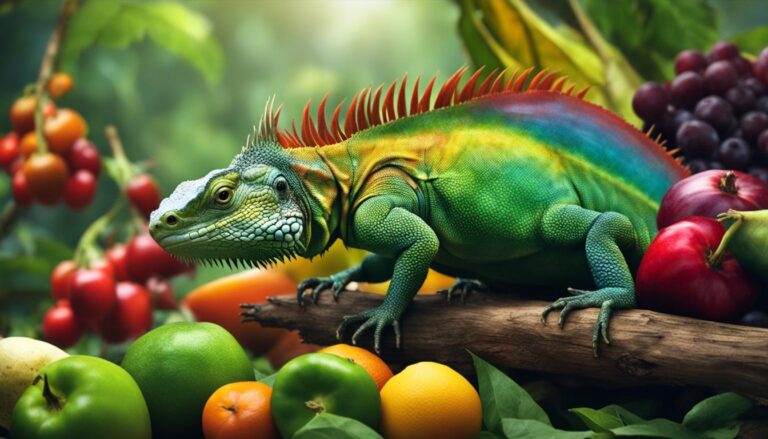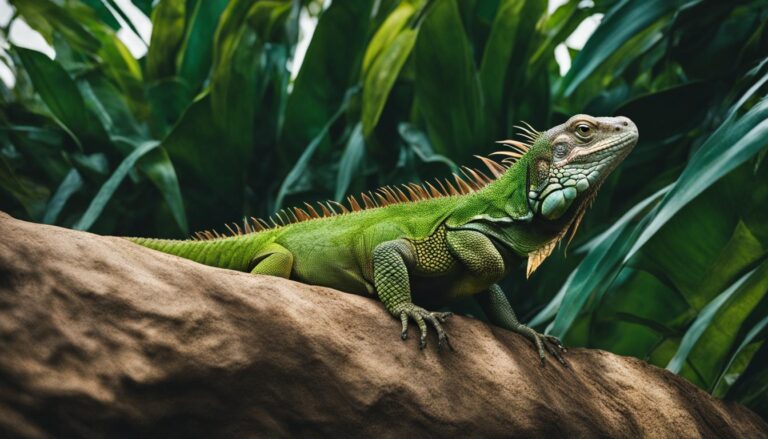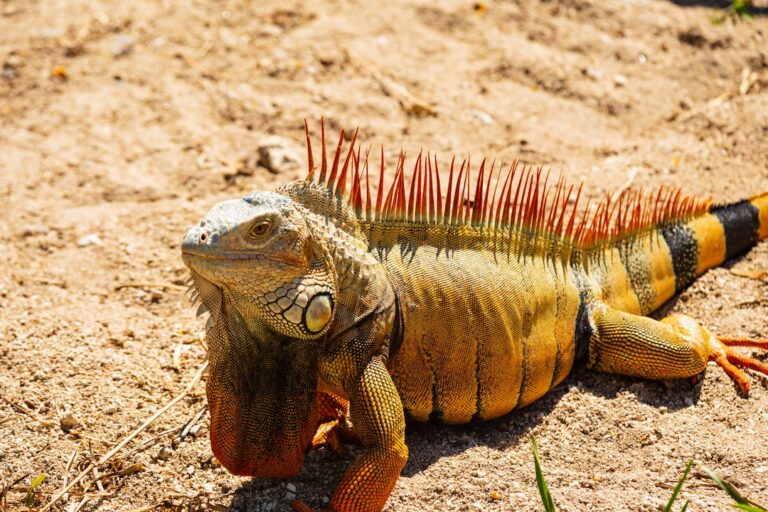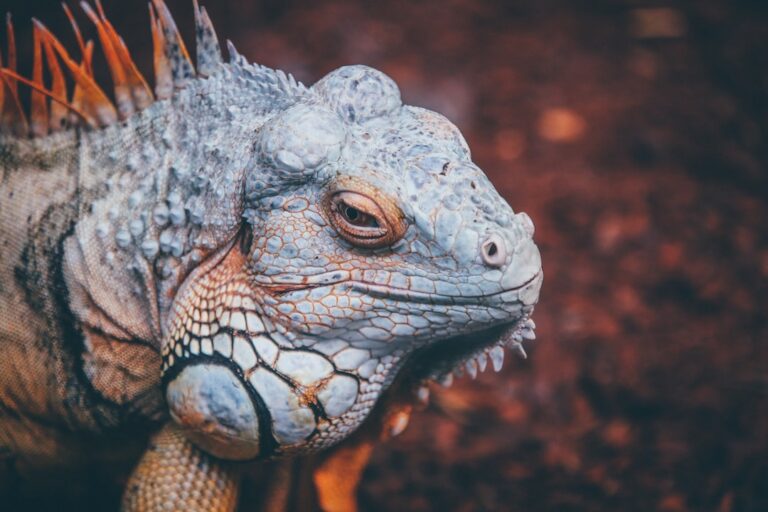Why Do Iguanas Turn Black?
Iguanas are fascinating reptiles known for their unique ability to change color. These creatures belong to the family Iguanidae and are native to tropical regions of Central and South America. They are popular pets among reptile enthusiasts due to their striking appearance and docile nature.
One of the most intriguing aspects of iguanas is their ability to change color. Unlike chameleons, which change color primarily for camouflage purposes, iguanas change color as a response to various factors such as temperature, humidity, lighting, hormones, and even their overall health. This color-changing ability is not only visually stunning but also serves as a means of communication and adaptation in their natural environment.
Table of Contents
Understanding the Science Behind Iguana Skin Pigmentation
The color changes in iguanas are primarily due to the presence of pigments in their skin. Melanin, a pigment responsible for darkening the skin, plays a significant role in iguana coloration. When melanin is concentrated in certain areas of the skin, it results in darker patches or spots. Conversely, when melanin is dispersed evenly throughout the skin, it creates a lighter or more vibrant color.
In addition to melanin, other pigments such as carotenoids and xanthophylls also contribute to iguana coloration. Carotenoids are responsible for producing red, orange, and yellow hues, while xanthophylls create shades of green and blue. The combination of these pigments gives iguanas their unique and vibrant appearance.
Genetics also play a role in determining iguana coloration. Different species and subspecies of iguanas have distinct genetic traits that influence their skin pigmentation. For example, the green iguana (Iguana iguana) is known for its bright green coloration, while the blue iguana (Cyclura lewisi) displays shades of blue and gray.
Environmental Factors That Affect Iguana Color
The color of an iguana can be influenced by various environmental factors. Temperature, humidity, and lighting all play a significant role in determining the coloration of these reptiles.
Temperature is a crucial factor in iguana color changes. When an iguana is exposed to cooler temperatures, its skin may darken to absorb more heat from the environment. Conversely, when the temperature rises, the skin may lighten to reflect excess heat. This ability to regulate body temperature through color changes helps iguanas maintain optimal thermoregulation.
Humidity also affects iguana coloration. In high humidity environments, the skin of an iguana may appear darker due to increased moisture content. This darker color helps the reptile retain moisture and prevent dehydration. On the other hand, in low humidity environments, the skin may appear lighter as a result of reduced moisture content.
Lighting is another important factor that impacts iguana color changes. Natural sunlight or full-spectrum UVB lighting is essential for maintaining healthy skin pigmentation in iguanas. Insufficient exposure to proper lighting can lead to dull or faded colors in these reptiles.
To ensure proper coloration and overall health, it is crucial to provide a suitable habitat for iguanas. This includes maintaining appropriate temperature and humidity levels, as well as providing adequate lighting sources such as UVB bulbs.
The Role of Hormones in Iguana Color Changes
Hormones play a significant role in iguana color changes, particularly during breeding season. Male iguanas undergo dramatic color transformations as they prepare to attract females for mating.
Testosterone, the primary male sex hormone, stimulates the production of melanin in male iguanas. As testosterone levels increase during breeding season, the skin of male iguanas may darken significantly, creating a more vibrant and attractive appearance. This darkening of the skin helps male iguanas stand out and signal their readiness to mate.
Female iguanas, on the other hand, do not experience such drastic color changes during breeding season. While their skin may undergo subtle shifts in coloration, it is not as pronounced as in males. This difference in color changes between males and females is believed to be a result of the varying hormonal levels and reproductive strategies of each gender.
Shedding and Regeneration of Iguana Skin
Iguanas, like many reptiles, shed their skin periodically as part of their growth process. During shedding, the outer layer of the skin is sloughed off, revealing a fresh layer underneath. This shedding process also affects the coloration of iguanas.
When an iguana is about to shed its skin, its color may appear dull or faded. This is because the old skin is preparing to be shed, and the new skin underneath has not yet fully developed its pigmentation. Once the shedding process is complete, the new skin will have a vibrant and colorful appearance.
It is important to provide proper care during the shedding process to ensure a smooth transition. This includes maintaining appropriate humidity levels to facilitate shedding and providing a suitable substrate for the iguana to rub against and aid in the removal of old skin.
The Relationship Between Iguana Health and Skin Color
The color of an iguana’s skin can provide valuable insights into its overall health. Changes in coloration can indicate various health issues that may require attention.
For example, if an iguana’s skin appears pale or discolored, it may be a sign of anemia or poor nutrition. Conversely, if the skin appears excessively dark or blackened, it could indicate dehydration or overheating. It is important to monitor any changes in color and consult a veterinarian if there are concerns about the iguana’s health.
Regular observation of an iguana’s skin color can also help detect early signs of skin infections or parasites. Any abnormal coloration or lesions should be examined by a professional to ensure proper treatment and prevent further complications.
Common Misconceptions About Iguana Blackening
There is a common misconception that iguanas turn black when they are angry or stressed. While it is true that iguanas may darken their skin in response to certain stimuli, such as threats or territorial disputes, this does not necessarily mean they are angry.
The blackening of an iguana’s skin is often a defensive mechanism to appear more intimidating to potential predators or rivals. It is a natural response to perceived threats and is not indicative of the iguana’s emotional state.
It is important to understand and respect an iguana’s natural behaviors and responses. Avoiding unnecessary stress and providing a calm and secure environment can help minimize any potential blackening of the skin.
Differences in Color Change Between Male and Female Iguanas
Male and female iguanas differ in their coloration, particularly during breeding season. Male iguanas undergo more pronounced color changes compared to females, as they need to attract mates.
During breeding season, male iguanas may display vibrant colors such as bright green, blue, or orange. These colors are often accompanied by darkening of the skin, creating a striking contrast. The purpose of these color changes is to attract females and establish dominance over other males.
Female iguanas, on the other hand, do not experience such dramatic color changes during breeding season. Their coloration may shift slightly, but it is not as pronounced as in males. This difference in coloration between genders is believed to be a result of the varying hormonal levels and reproductive strategies.
How to Care for Your Iguana During Color Changes
Proper care is essential during iguana color changes to ensure the reptile’s health and well-being. Here are some tips for providing optimal care during this time:
1. Maintain a suitable habitat: Ensure that the temperature, humidity, and lighting in the iguana’s enclosure are appropriate for its species. This will help support healthy coloration and overall well-being.
2. Monitor behavior and health: Keep a close eye on your iguana’s behavior and overall health during color changes. Any significant changes in appetite, activity level, or appearance should be addressed promptly.
3. Provide a balanced diet: Offer a varied diet consisting of leafy greens, vegetables, fruits, and occasional protein sources such as insects or cooked eggs. A balanced diet will provide the necessary nutrients for healthy skin pigmentation.
4. Offer opportunities for shedding: Provide a suitable substrate, such as bark or reptile carpet, for the iguana to rub against during shedding. This will help facilitate the shedding process and prevent any complications.
5. Minimize stress: Avoid unnecessary handling or disturbances during color changes, as this can cause stress to the iguana. Provide a calm and secure environment to promote a smooth transition.
Appreciating the Beauty of Iguana Color Changes
The ability of iguanas to change color is truly remarkable and adds to their allure as pets and fascinating creatures of nature. Understanding the science behind their coloration and providing proper care during color changes is essential for their well-being.
By appreciating and caring for these amazing reptiles, we can ensure that they thrive in captivity and continue to captivate us with their stunning colors. Let us embrace the beauty of iguana color changes and continue to learn more about these incredible creatures.
If you’re curious about why iguanas turn black, you might also be interested in learning about the differences between chameleons and iguanas. Check out this informative article on reptilefriend.com to discover the unique characteristics and behaviors of these fascinating reptiles.


